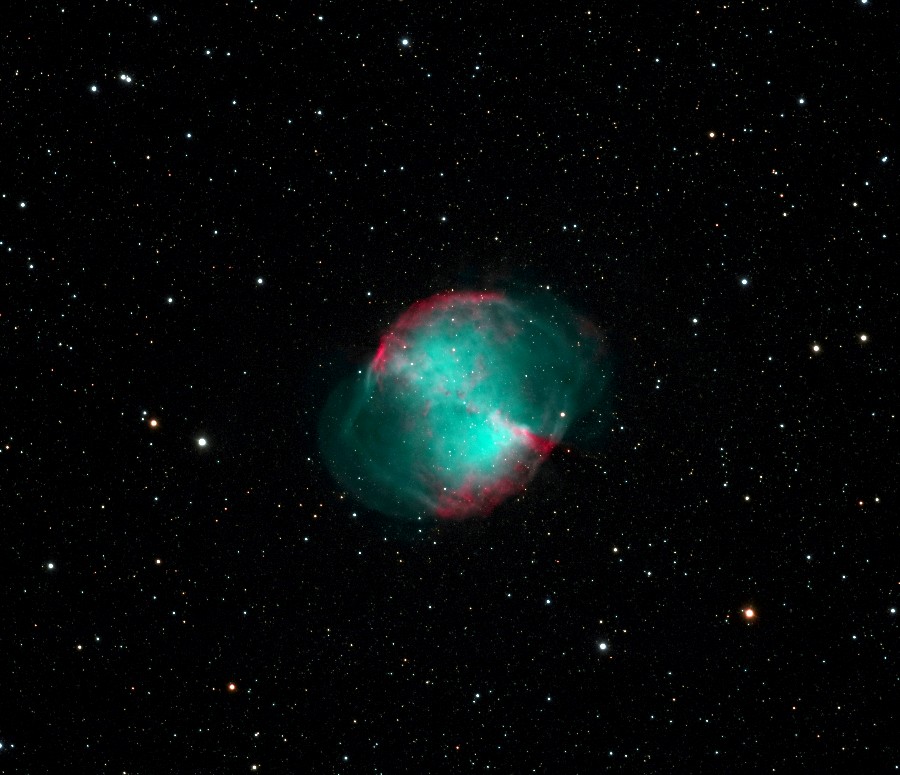
|
|
| M27, Dumbbell Nebula Click Here for a full resolution image |
|
This is Messier object #27, popularly known as the Dumbbell Nebula. Located in the the Milky Way about half way between the bright stars of Altair and Deneb, M27 is big enough and bright enough to be seen from dark rural sites with just binoculars. It is at its height between mid summer and mid fall. There is a bluish white star in the middle of M27, which is what created this nebula, and is setting it aglow. The star is only about 6 times larger than our earth, and about 1400 light years away, but because it shines with a brilliance and intensity sixty times greater than our sun, it easily shows up in this photograph. With that kind of intensity, there is a lot of UV emitted, and that is what has set the gas of the surrounding nebula aglow. The blue-green color is glowing triple ionized (3 electrons stripped from each molecule) oxygen and the reds are largely that of ionized hydrogen. Those gases (and a lot more like nitrogen, helium, carbon and neon) all came from the now tinny central star. Have you ever heard of the solar wind? The stream of particles blowing away from our sun? - that causes our aurora? Well, during the latter part of this star's life it got so hot and the nuclear furnaces at it's core became so violent that it blew off its outer layers. That little white star in the middle is actually the molten, incredibly hot remains of the core of that star. It will be billions of years before it cools down to the temperature of our sun. In the mean time its radiation will continue to push out and illuminate the gaseous nebula that used to be its outer layers. |
|
Celestron 11" Edge HD, f10, Modified Schmidt Cassegrain Telescope, Canon Ra camera at Prime Focus, |